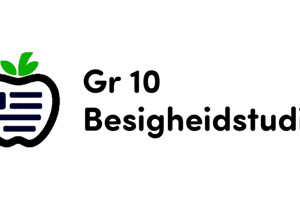Podcast
Questions and Answers
Which of these are the most common business sectors? (Select all that apply)
Which of these are the most common business sectors? (Select all that apply)
- Manufacturing Companies (correct)
- Merchandising Companies (correct)
- Investment Companies
- Service Companies (correct)
What are Service Companies?
What are Service Companies?
Companies that provide services or intangible products.
What are Merchandising Companies?
What are Merchandising Companies?
Companies that purchase and sell tangible products without changing their form.
What do Manufacturing Companies do?
What do Manufacturing Companies do?
The value chain includes Research & Development, Design, Production, Marketing, Distribution, and ______.
The value chain includes Research & Development, Design, Production, Marketing, Distribution, and ______.
What is Research and Development?
What is Research and Development?
What does the Design phase entail?
What does the Design phase entail?
What are Production or Purchases?
What are Production or Purchases?
What is Marketing?
What is Marketing?
What is Distribution?
What is Distribution?
What is Customer Service?
What is Customer Service?
What is a Cost Object?
What is a Cost Object?
What is a Direct Cost?
What is a Direct Cost?
What is an Indirect Cost?
What is an Indirect Cost?
What is Total Cost?
What is Total Cost?
What is Inventoriable Product Cost?
What is Inventoriable Product Cost?
What is a Period Cost?
What is a Period Cost?
What is Prime Cost?
What is Prime Cost?
Match the following terms to their definitions:
Match the following terms to their definitions:
What is Work in Process?
What is Work in Process?
Flashcards are hidden until you start studying
Study Notes
Most Common Business Sectors
- Service companies offer intangible products like consultancy, healthcare, and education.
- Merchandising companies buy and sell tangible goods without altering their form, maintaining inventory ready for sale.
- Manufacturing companies transform raw materials into finished products using labor and equipment.
Service Companies
- Examples include law offices, medical practices, hair salons, and internet service providers.
- Services are intangible and do not require inventory for resale.
Merchandising Companies
- Purchase goods to sell directly to customers.
- Examples include major retailers like Wal-Mart, Kmart, and Target.
- They own the inventory which is ready for resale.
Manufacturing Companies
- Utilize labor and equipment to convert raw materials into products.
- Maintain three inventory types: raw materials, work in process, and finished goods.
- Notable examples are Bombardier Inc. and McCain Foods Ltd.
The Value Chain
- Represents steps from research and development through to customer service.
- Key stages include:
- Research & Development
- Design
- Production
- Marketing
- Distribution
- Customer Service
Cost Concepts
- Cost objects are items for which costs are measured separately, such as jobs or products.
- Direct costs can be directly traced to cost objects; indirect costs cannot.
- Total cost comprises all resources throughout the value chain.
Product Costs
- Inventoriable product costs are incurred during production or purchases.
- Period costs are operating expenses expensed when incurred, not linked to inventory.
- Prime costs combine direct material and direct labor costs.
- Conversion costs include direct labor and manufacturing overhead.
Inventory Types & Manufacturing Costs
- Merchandisers hold a single type of inventory; service companies have none.
- Manufacturers have three inventory types: raw materials, work in process, and finished goods.
- Manufacturing costs break down into direct materials, direct labor, and manufacturing overhead.
Cost Behavior
- Fixed costs remain constant within a relevant range, while variable costs fluctuate with activity levels.
- Opportunity costs represent benefits lost when one option is chosen over another.
- Administrative costs encompass management-related expenses not tied to manufacturing or selling.
Additional Cost Concepts
- Common costs support multiple cost objects but cannot be traced individually.
- Sunk costs are incurred expenses that cannot be altered by future decisions.
- Differential costs and revenues indicate changes in costs or revenues between alternatives.
Inventory and Production
- Direct materials are integral to the finished product and easily traced.
- Finished goods are complete products awaiting sale.
- Work in process comprises partially completed items.
Cost Schedules
- Schedule of cost of goods manufactured details costs for direct materials, labor, and overhead during a period.
- Selling costs relate to expenses incurred in securing customer orders and delivering products.
Studying That Suits You
Use AI to generate personalized quizzes and flashcards to suit your learning preferences.




